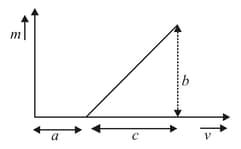EASY
Physics
IMPORTANT
Earn 100
A light wave travels from glass to water. The refractive index for glass and water are and , respectively. The value of the critical angle will be
(a)
(b)
(c)
(d)
44.44% studentsanswered this correctly

Important Questions on Ray Optics
EASY
Physics
IMPORTANT
MEDIUM
Physics
IMPORTANT
HARD
Physics
IMPORTANT
HARD
Physics
IMPORTANT
The graph shows how the magnification , produced by a convex thin lens, varies with the image distance . What is the focal length?

HARD
Physics
IMPORTANT
A diverging lens of focal length is moving towards right with a velocity . An object placed on the principal axis is moving towards left with a velocity . The velocity of the image at the instant when the lateral magnification produced is , is (All velocities are with respect to ground)
HARD
Physics
IMPORTANT
HARD
Physics
IMPORTANT
A point object is placed on the axis of a thin convex lens of focal length at a distance of from the lens and its image is formed on the axis. If the object is now made to oscillate along the axis with a small amplitude of , then what is the amplitude of oscillation of the image?
[you may assume, where
HARD
Physics
IMPORTANT
